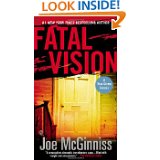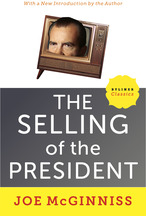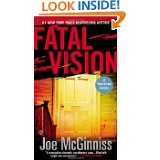Archive for November 2012
2d Letter to The New Republic about Correcting Errors
To the editor:
As yet, I’ve received no response to my request for corrections of the errors in the Margo Howard story, “Scenes from a Southern Gothic Murder Trial.”
In addition to the false statements I called to your attention last week, I’d like to point out the following additional mistakes:
–Nowhere in the Fourth Circuit opinion remanding the case to District Court for further consideration is it stated that “exculpatory evidence may have been withheld, suppressed, or destroyed prior to MacDonald’s trial.”
Instead, the Fourth Circuit found that the District Judge adopted an “overly restrictive view of what constitutes the ‘evidence as a whole.’ ” (See U.S v. MacDonald 641 F. ed 596. C.A. 4 (N.C.) 2011. April 19, 2011)
–Wade Smith did not represent MacDonald in 1975.
–Wade Smith was not Edwards’s “lead attorney.” That was Abbe Lowell of Chadbourne & Parke in Washington, DC.
–The 1979 prosecutor, James Blackburn, was already First Assistant U.S. Attorney for the eastern district of North Carolina at the time he prosecuted MacDonald. He later became U.S. Attorney.
–Howard writes: “as a sequestered witness one is not supposed to be giving interviews or flogging a book.” This is untrue. “Sequestered” does not mean bound and gagged.
It means only that one is not permitted to enter the courtroom to listen to testimony given in advance of one’s own. I specifically asked assistant U.S. Attorney
John Bruce whether I was permitted to tweet, blog, or give interviews during the hearing and he said I was, as long as I did not disclose the nature or scope of my
testimony before I gave it. There was nothing improper in what I did.
I would appreciate hearing from you in regard to both this letter and my letter of November 1 as soon as possible.
Sincerely,
Joe McGinniss
No NYC Marathon This Year…
…Nor should there have been. How Mayor Billionaire Bloomberg and NY Road Runners could ever have tried to force this carnival down the throat of a suffering city beggars belief.
How insensitive and self-absorbed can public officials and corporate executives be? And make no mistake: NY Road Runners is a multi-million dollar corporation whose chairman of the board, George Hirsch, I happen to know.
George Vecsey, whom NY Times pensioned off much too soon, offers the best perspective I’ve seen: http://goo.gl/Mp69A
I ran NYC three times, but with bodies of children still being dragged out of the mud this is not the time for prancers and dancers to celebrate their physical fitness in front of thousands without electricity, food, or water for drinking or flushing.
My letter to The New Republic asking for corrections of Margo Howard errors
To the editor:
 I would like to point out several factual errors in Margo Howard’s recent story, “Scenes from a Southern Gothic Murder Trial.”
I would like to point out several factual errors in Margo Howard’s recent story, “Scenes from a Southern Gothic Murder Trial.”

